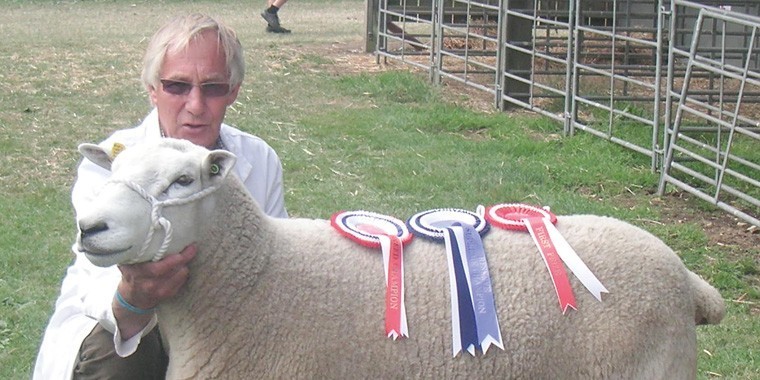It was lovely to be able to have a day out at the rare breeds show at the Weald and Downland Museum at Singleton, West Sussex. It was a beautiful day, in a lovely location and a very traditional show, with a lovely atmosphere, which seems to get bigger, (but not too big) and better each year.
There were some very good animals forward, most of which would stand up well in the line up at almost any agricultural show. But most of the breeders were there not necessarily to win, but to show off their animals that they were obviously – and justifiably – very proud of, which was really quite refreshing to see. Most exhibitors were what many commercial sheep producers would refer to as smallholders. Some might even say they are not proper farmers, in the same way that many would say that rare breeds are not proper breeds and would then add that the breeds are rare for a reason, which they undoubtedly are.
Many of the rare breeds are rare simply because they are not currently fashionable, and the key word is currently. They all contain genetic material that we may, at some time in the future, need: once a breed is lost, it is lost forever and so are those genetic resources
.
The Southdown was a rare breed up until a few years ago, but it is a breed that is seeing a significant comeback, driven largely by small flock owners. Another very good example that was driven – particularly in its early years largely by small, but very enthusiastic, flock owners – is the Lleyn. In the 1960s, the Lleyn was a rare breed, but is now probably the most numerous lowland breed in the country: if it isn’t it soon will be.
When I registered my flock some 28 years ago my flock number was (and still is) 559; new flock registrations are now well into the three thousands and that ignores the numerous flocks of commercial Lleyn sheep, all over the UK, some of them with several thousand pure bred ewes. We never know what genetic resources we may need in the future: e.g. the northern short tailed breeds, such as the Shetland or Icelandic, may prove to be an important source of genes should we ever be faced with a tail docking ban for lambs in the UK.
As an industry I think we should all support those people who are working hard, and no doubt enjoying doing it, preserving those genetic resources. We could always preserve them as frozen embryos and semen, but that wouldn’t make much of a show, would it?
Bluetongue vaccine is now available to sheep producers, through a vet. I know it is expensive at about £1.50 per dose, particularly as there is a requirement for two initial doses three weeks apart. Producers should all at least be considering the pros and cons of vaccination, not simply dismissing it on grounds of costs.
Talking to my vets, it was encouraging to hear that they have had a large number of enquiries about bluetongue and a lot of producers ordering vaccine and committing to vaccination. I shall certainly be ordering mine in time to ensure full cover before tupping begins: an outbreak in the middle of tupping could be devastating for next year’s lamb crop. After all one lamb lost, at a value of £75 (it makes the maths nice and easy) is worth 50 (25 double) doses of vaccine.
It is a shame that we could not have some national levy (as proposed by the National Sheep Association) put into place to help underwrite the cost of the vaccine. Producers across the whole country will benefit from any barrier to the potential spread of bluetongue infection that can be to put in place in the South East, as happened in the last outbreak.
We certainly cannot rely on DEFRA for any support. They have a lot more to worry about currently, not least of which must be to come up with some sensible and coherent plan for agriculture post Brexit. I saw an interesting quote today from Jeremy Kinsman the former Canadian ambassador to the European Union, who said: “The Brexiteers are the dog that caught the bus: they hadn’t thought what to do next.”
For those that are interested, the annual report on UK agriculture for 2015 has just been released. I can’t imagine that many people will want to read all 112 pages but selected elements do make interesting reading. For example the average pence per kilogram for finished lamb in 2011 was 432.9 but only 381.1 in 2015. Non EU imports of lamb increased from 93,000 tonnes in 2011 to 102,000 tonnes in 2015 and home fed production as a percentage of total new lamb supply in the UK dropped from 101% in 2011 to 93% in 2015. Well done Tesco and the others for your whole hearted commitment to supporting British lamb producers. I’m sure you’re making a nice profit, because we certainly are not!




